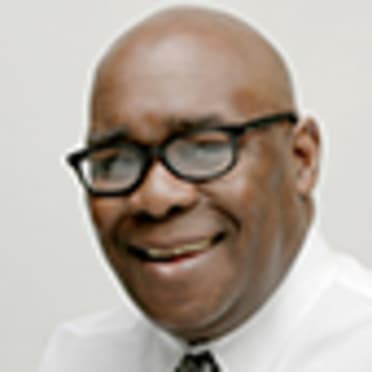How McClendon helped Strawberry become Mets legend
NEW YORK -- Darryl Strawberry and Lloyd McClendon were never Major League teammates, but they were best friends while coming up through the Mets’ farm system in the early 1980s.
Now, as Strawberry prepares for his number retirement ceremony at Citi Field on June 1, he has been thinking about the people like McClendon who helped him throughout his career in baseball. Strawberry said he wouldn’t have been successful in professional baseball if McClendon wasn’t part of his life.
“We spent a lot of quality time together in instructional league and got to know each other,” Strawberry said. “I want to be able to say thank you to those people who were really great to me and got me to that point, because a player doesn’t get there by himself. … I know how I got there. I want to remember the people that nobody talks about.”
“Darryl and I have always been the best of friends,” added McClendon. “I told him I would absolutely be at the number retirement ceremony, God willing. I’m really happy for him.”
Strawberry and McClendon met after the Mets selected both of them in the 1980 MLB Draft. Strawberry was the No. 1 overall pick, while McClendon was an eighth-round selection. Strawberry came to the Mets with a lot of hype after being labeled by scouts as the “Black Ted Williams,” because of his sweet swing from the left side of the plate.
McClendon didn’t get the same publicity. He was best known for hitting five home runs in five at-bats in the Little League World Series for Gary, Indiana, in 1971.
They first became teammates while playing for Kingsport (Tenn.) of the Rookie-level Appalachian League in 1980. A year later, while playing for Class A Lynchburg (Va.), Strawberry began to think about quitting baseball, going back to school and playing basketball.
With McClendon away at extended Spring Training nursing a wrist injury, Strawberry felt alone. He was also upset by the racial slurs directed toward him from some fans in the stands. Lynchburg manager Gene Dusan advised Strawberry to ignore them. It didn’t help that Strawberry got off to a slow start.
“I was like, 'Man, who wants to play baseball if you have to go through this?'” Strawberry recalled.
McClendon remembered the donations that fans at Lynchburg would give only to the white players.
“I talked about this several times in the past. … They had a thing where they passed the hat if you hit a home run,” McClendon said. “Well, if the Black guys hit a home run, the hat wasn’t passed around. We were making $300 every two weeks and most of us didn’t have a big signing bonus. That was tough to swallow.
“You see the white guys hit a home run and the hat is passed around and you get $50 bucks. We hit a home run and you get nothing.”
After McClendon returned, Dusan asked him to room with Strawberry. Dusan wanted Strawberry to have a positive influence and felt McClendon, then 22, already had the leadership qualities to help the organization’s best player.
Strawberry rooming with McClendon turned out to be a good thing. McClendon encouraged Strawberry to be himself, play the game with passion and have the desire to be the best that he could be. Don’t try to please anybody else, he told him.
“[He] was just being a big brother, just to keep me encouraged about the fact that we are going to make it, because we were together and we wanted to make it to the big leagues. That was important for all of us,” Strawberry said. ”A lot of guys had their own personal friends. Lloyd McClendon was my personal friend. We were like brothers. He was leading me to a place of showing me my greatness. Because I was so young and had so much talent, he recognized it and he took me under his wing.”
McClendon’s influence paid off. By 1983, Strawberry was the No. 1 prospect in baseball. He made his Major League debut on May 6 of that year. Strawberry went on to have a great eight-year career with the Mets, winning the NL Rookie of the Year Award, finishing with seven All-Star nods and helping the Mets win two division titles, one pennant and one World Series title (1986). He remains the franchise leader with 252 career home runs. Strawberry left the Mets after the 1990 season, signing with the Dodgers as a free agent.
McClendon never had a front-row seat to see Strawberry’s success in New York. Several months before Strawberry’s debut, McClendon was dealt to the Reds as part of a four-player trade that sent Tom Seaver back to the Mets. McClendon ended up being a valuable bench player with the Cubs and Pirates before becoming a manager with the Pirates, Mariners and Tigers. But he never lost touch with Strawberry.
“The fact is, Darryl and I always stayed in touch,” McClendon said. “We never went very long without talking to each other. We try to talk at least twice a month.”
